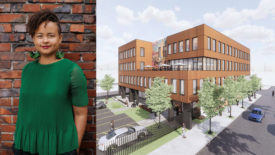Home » Keywords: » diversity in architecture
Items Tagged with 'diversity in architecture'
ARTICLES
Q&A with Riding the Vortex: This Year’s AIA Whitney M. Young Jr. Award Winner
The collaborators discuss supporting Black women in architecture
Read More
New Design Initiative Aims to Elevate Asian and Pacific Islander Leadership
A Rising Tide, a new API collective, plans to host a series of events and launch an online design directory
Read More
Interview with Designer, Engineer, and Educator Felecia Davis
Davis works at the intersection of architecture, textiles, design, and technology
Read More
Interview with Lesley Lokko
The award-winning Ghanaian-Scottish architect and educator speaks to RECORD editor-in-chief Cathleen McGuigan
Read More
Copyright ©2024. All Rights Reserved BNP Media.
Design, CMS, Hosting & Web Development :: ePublishing











